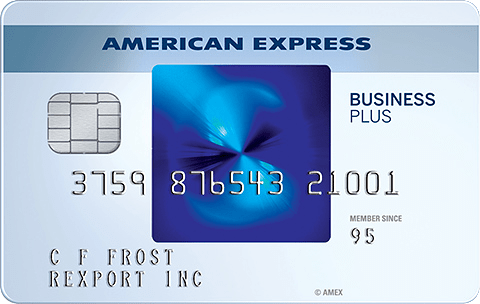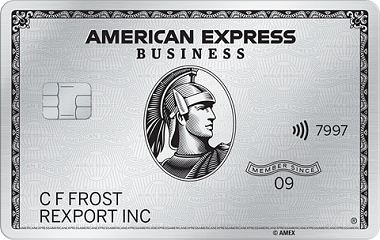- Day 1 – What’s Travel Hacking all about?
- Day 2 – Getting Organized
- Day 3 – Types of Miles and Points
- Day 4 – Credit Card Strategy
- Day 5 – Southwest Companion Pass
- Day 6 – Business Credit Cards
- Day 7 – Hotel Free Night Sign-Up Bonuses & Annual Certificates
- Day 8 – How to Apply & Track
- Day 9 – Not Instantly Approved
- Day 10 – Meeting the Spending Requirement
- Day 11 – Cancel or Keep?
- Day 12 – Keep Miles from Expiring
- Day 13 – Shopping Portals
- Day 14 – MileagePlus X
- Day 15 – Hotel Stays & Rental Cars
- Day 16 – Dining Rewards
There are three main types of award charts that airlines use. This course unit will give you a better understanding on which types of miles to use in different situations. Each award chart has pros and cons. Let’s dig into them.
1. Fixed Value Miles
Examples: Southwest, JetBlue
Fixed value miles are the easiest to understand and easiest to redeem. Each mile in an airline’s program is worth a specific monetary value. The amount of miles it costs to redeem a flight will vary based upon the flight you select. Let me give you an example with Southwest:
Let’s say we want to fly nonstop from Washington DC to Orlando, Fl for a trip to Disney World on September 16th. A search at Southwest.com brings up the following options:
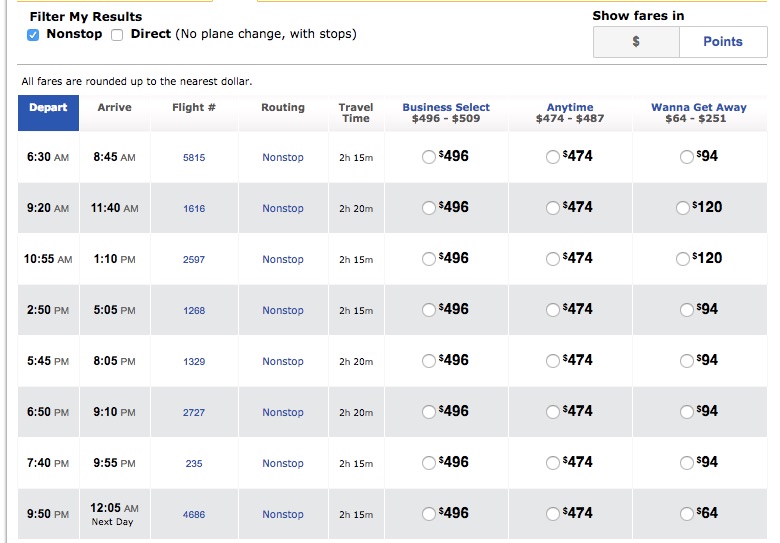
As you can see there 8 nonstop flights which range from $64 to $120 for the ‘Wanna Get Away’ fares depending on the departure time. To see how many Southwest Rapid Reward points the flight would cost, simply click on the ‘Points’ tab at the top right:
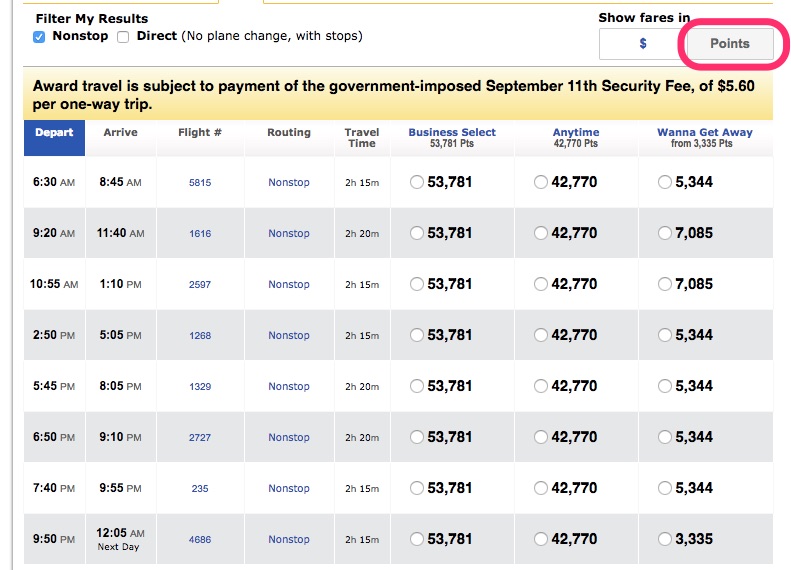
As you can see all of the flights were changed from the dollar value to their corresponding point value. The $64 – 9:50pm flight costs 3,335 points which equates to a 1.75 cents/point value ($64-$5.60 taxes*= $58.40/3,335). *The $64 fare includes $5.60 of taxes that would have to be paid separately if you redeemed 3,335 points for the flight.
The number of Southwest points needed for flight redemptions officially vary based upon destination, time, day of travel, demand, and fare class. But typically you will get 1.6-1.7 cents/point value.
2. Distance Based Award Charts
Examples: British Airways Avios, Japan Airlines
The price in miles for the award ticket is directly related to the distance you travel. Distance based award charts are less common but still do exist and can have some great values, especially for short haul flights. British Airways is probably the most well known. Let me show you how it works.
Here is British Airways Avios award chart for economy flights.
| Distance (miles) | Economy Award Price (Avios) |
|---|---|
| 1 - 650 | 7,500 (4,500 outside US) |
| 650 - 1,151 | 7,500 |
| 1,152 - 2,000 | 10,000 |
| 2,001 - 3,000 | 12,500 |
| 3,001 - 4,000 | 20,000 |
| 4,001 - 5,500 | 25,000 |
| 5,501 - 6,500 | 30,000 |
| 6,501 - 7,000 | 35,000 |
| 7,001 + | 50,000 |
To get an idea of the distance between two airports, I always check out gcmap.com to calculate distances. It’s very easy to use, just type in the two (or more) airports that you are trying to find the distance between.
In our Disney World trip example above, we were flying from Washington DC to Orlando, let’s check the distance and see how many British Avios this trip should cost.
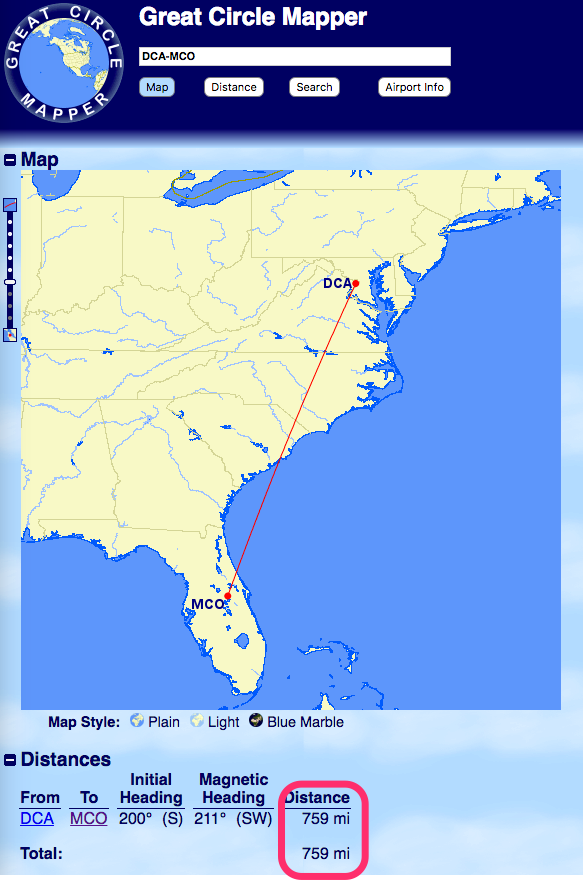
The distance between DCA and MCO on gcmap.com is shown to be 759 miles. Checking the award table above, it should cost 7,500 Avios. Let’s double check and go to British Airway’s website and try to book this award. After logging in and performing an award search, we are able to confirm there are four award tickets left on the 5:45pm non-stop American Airlines flight from DCA to MCO. Each award ticket would cost 7,500 Avios + $5.60 taxes.
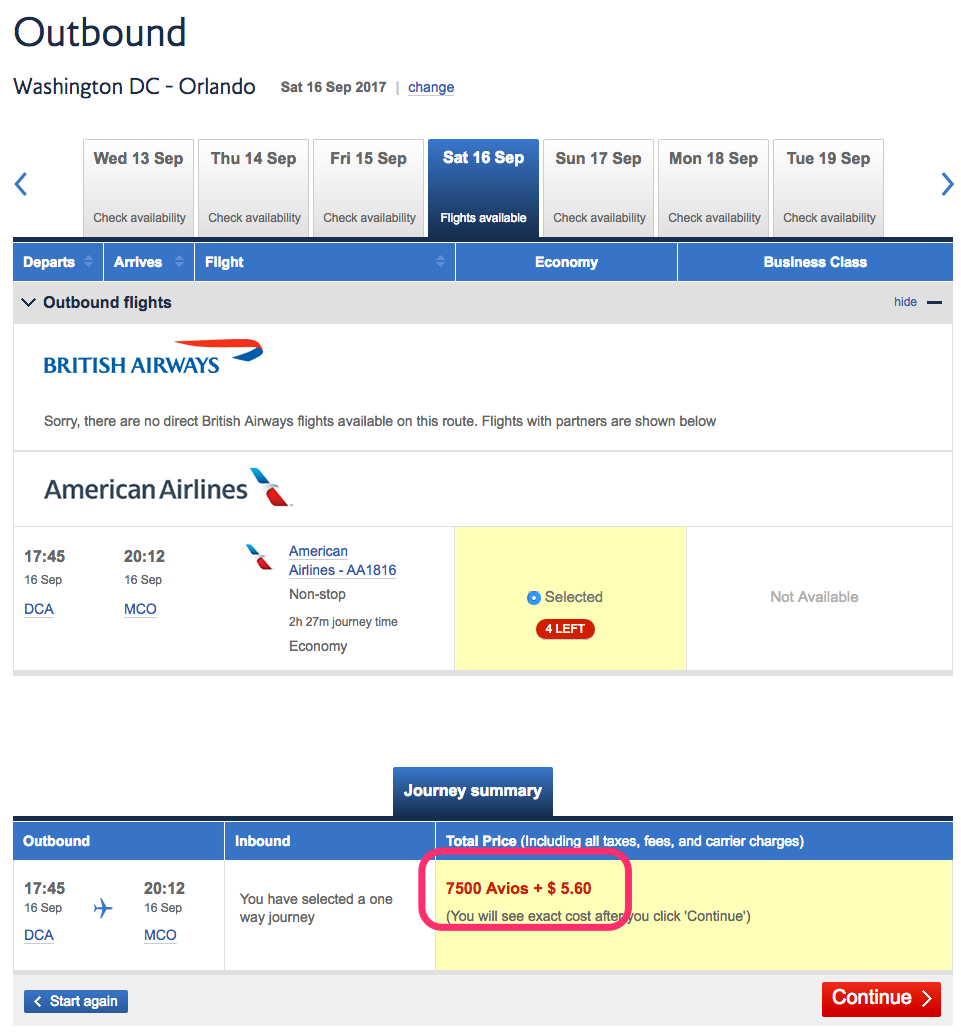
3. Region Based Award Charts
Examples: American Airlines, United, Singapore
Region based award charts are the most common especially for the legacy airlines. Airlines will break up the entire world into different regions (South America, Africa, Australia, etc). The cost of the award ticket will depend on which region you are departing from and which region is your final destination.
Each airline has their own rules on for how many segments you can use to get to your destination, what regions you can and can’t travel through (you won’t be able to travel from North America to South America by traveling through Europe), if you are allowed to backtrack, etc
Let’s look at an example of one of United’s award charts:
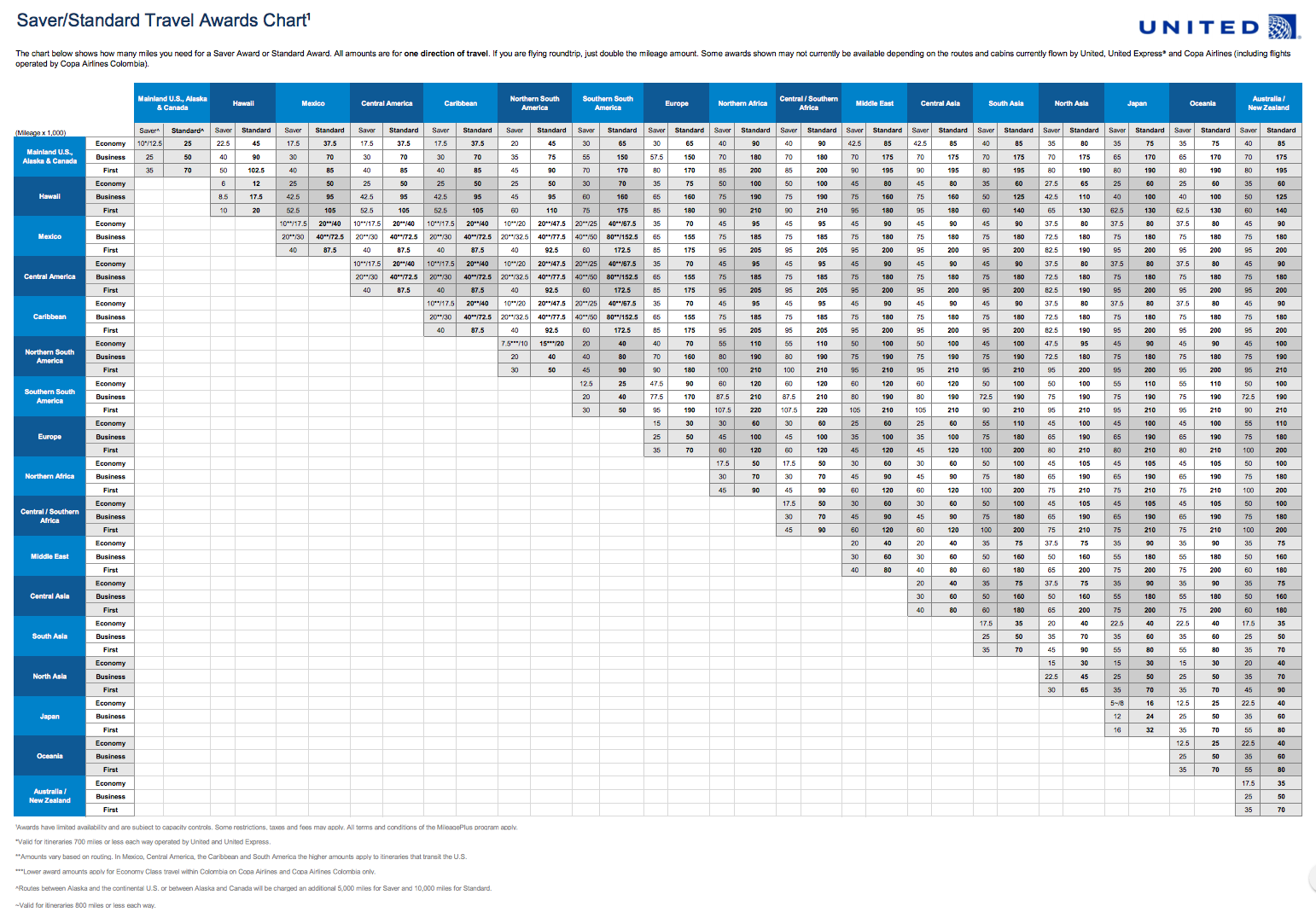
You can see the different regions are along the top and left hand side. To find the cost of a award, find the region you are departing from in the left column and then find your destination region in the top row – where those two meet will be the cost of the award.
Let’s try to find the cost of an award ticket if we were leaving Washington DC and arriving in Cancun? What do you think it would cost for an economy ticket?

If you said 17,500 miles – you are correct!
Let’s go back to our September 16th Disney World trip and try to find the cost of a United Saver award ticket – what do you think it is?
From the ‘Mainland US’ region to the ‘Mainland US’ region, the award chart reads either 10,000* or 12,500 miles. If you read the fine print for the ‘*’, it says the 10,000 miles is valid for trips 700 miles or less. Since we already checked the mileage for the distance based award chart, we know that Washington DC to Orlando is 759 miles, so we just missed the 10,000 mile award so it should cost 12,500 miles at United.com. Let’s try to book the award and see if we were correct.
Performing an award search at United.com produces these results:
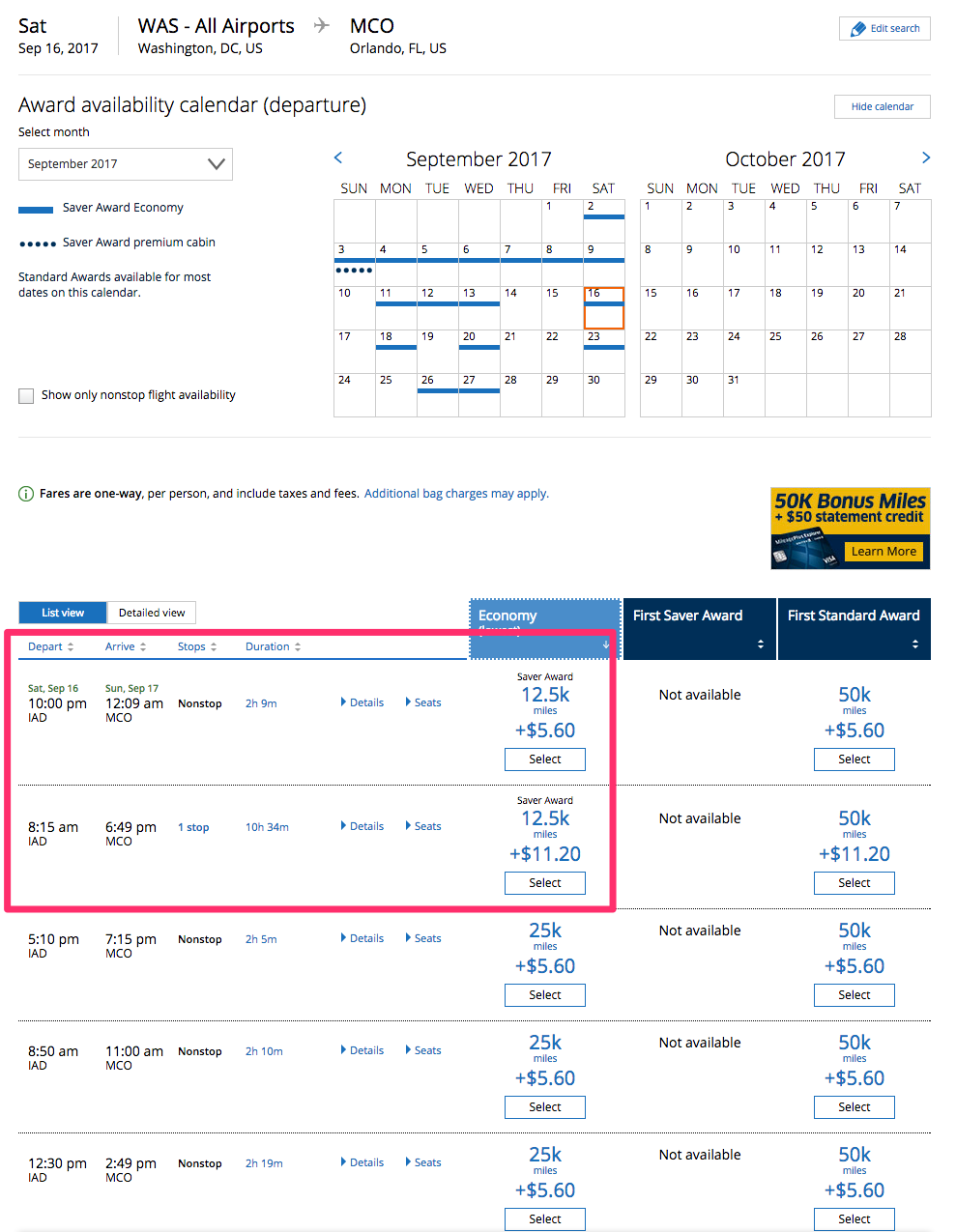
So there are in fact two different 12,500 mile saver awards options. One is non-stop but doesn’t leave until 10:00pm and the second option is a one stop flight that leaves at 8:15am and doesn’t arrive in Orlando until 6:49pm (with a 6+ hour connection in Newark). There are a few other nonstop options but there are no more saver awards left, only 25,000 mile standard awards.
So let’s recap the different non-stop options we have from the three different award charts above:
- Southwest 9:50pm for 3,335 miles
- Southwest 6:30am, 2:50pm, 5:45pm, 6:50pm, or 7:40pm for 5,344 miles
- Southwest 9:20am or 10:55am for 7,085 miles
- American (through British Airways) 5:45pm for 7,500 miles
- United 10:00pm for 12,500 miles
- United 8:50am, 12:30pm, or 5:10pm for 25,000 miles
Which would you choose?
Need to Knows
- There are three main types of airline award charts – each has it’s own benefits:
- Fixed Value – award ticket mile cost will vary by cash cost of ticket with no ‘blackout’ dates
- Distance Based – award ticket mile cost based upon actual distance between airports – great for short flights but requires limited ‘saver’ award space to be available
- Region – award ticket mile cost based upon region to region travel – great for flying into small airports that would require a connection (increasing the cost of a distance based award) or be expensive for a fixed value reward. But ‘saver’ award space is limited and not a great deal when cash prices are very low

